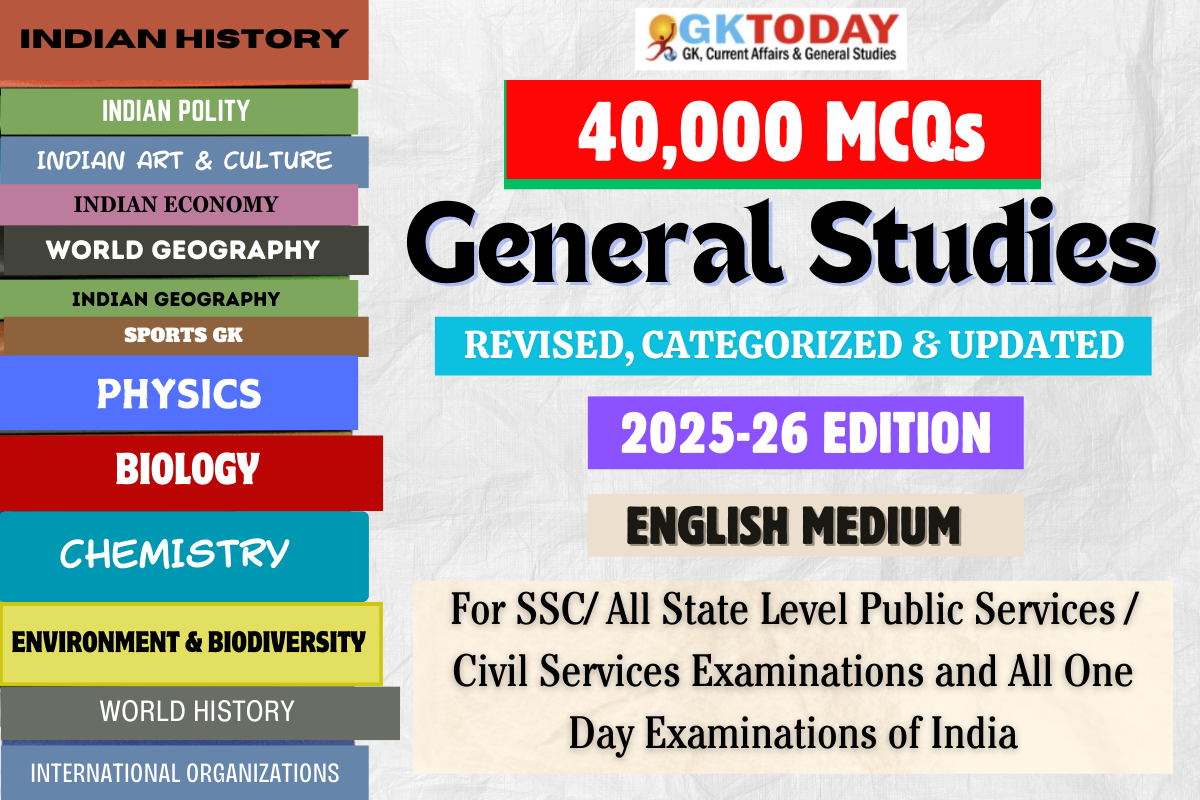Indian Polity & Constitution MCQs
Indian Polity & Constitution Objective / Multiple Choice (MCQs) Questions for Preparation of SSC-CGL, UPSC Civil Services, NDA, CDS, Railways and State Level Public Services Examinations.
1. Who among the following was the chairperson of the Provincial Constitution Committee of the Constituent Assembly?
[A] Jawaharlal Nehru
[B] Sardar Vallabhbhai Patel
[C] Dr. B.R. Ambedkar
[D] J.B. Kripalani
Show Answer
Correct Answer: B [Sardar Vallabhbhai Patel ]
Notes:
The constituent assembly appointed a number of committees to deal with different tasks of constitution. Sardar Vallabhbhai Patel was the chairperson of the Provincial Constitution Committee.
2. A judge of Supreme Court of India can be removed from office by which / whom among the following?
[A] Parliament by law
[B] Judges of supreme court by Majority
[C] President on a resolution by parliament
[D] President on his/ her own discretion
Show Answer
Correct Answer: C [President on a resolution by parliament ]
Notes:
A Judge of the Supreme Court (and also High Court) can be removed from his position by President only on the ground of proved misbehaviour or incapacity. The power for investigation and proof of such misbehaviour or incapacity is vested in the parliament. Each house, in order to remove the judge, will have to pass a resolution which is supported by 2/3rd of members present and voting and majority of the total membership of the house {absolute + special majority}
3. Who among the following was the First Deputy Chairman of Planning Commission?
[A] Gulzari Lal Nanda
[B] V.T. Krishnamachari
[C] C.M. Trivedi
[D] Ashok Mehta
Show Answer
Correct Answer: A [Gulzari Lal Nanda]
Notes:
The first deputy chairperson of the planning commission was former Prime minister of India Gulzarilal Nanda from 17 February 1953 to 21 September 1963.
4. An ordinance is promulgated by President when__:
[A] He / she feels that ordinance should be promulgated (on discretion).
[B] Supreme Court advises the president.
[C] Parliament passes a resolution.
[D] Council of Ministers advises the president.
Show Answer
Correct Answer: D [Council of Ministers advises the president. ]
Notes:
An ordinance can be promulgated by the President of India on the recommendation of the Union Cabinet / Council of Ministers.
5. Jatiya Sangsad is the parliament of which among the following countries?
[A] Afghanistan
[B] Nepal
[C] Bangladesh
[D] India
Show Answer
Correct Answer: C [Bangladesh]
Notes:
Jatiya Sangsad, also known as the National Parliament of Bangladesh, is the supreme legislative body of the country. It consists of 350 members who are elected by the people and are responsible for making and amending laws. The Jatiya Sangsad is headed by the Speaker, who is chosen by the members of parliament. The parliament is located in the capital city of Dhaka.
6. What fraction of Rajya Sabha members retire after every two years?
[A] 2/3
[B] 1/3
[C] 1/2
[D] 1/6
Show Answer
Correct Answer: B [1/3]
Notes:
Rajya Sabha is a permanent House and is not subject to dissolution. However, one-third Members of Rajya Sabha retire after every second year.
7. Right to property was made a Legal right from a Fundamental Right by which among the following amendments to Indian Constitution?
[A] 42nd
[B] 44th
[C] 46th
[D] 48th
Show Answer
Correct Answer: B [44th]
Notes:
By 44th constitutional amendment act in 1978 the right to property was taken away from the category of fundamental rights and made as a legal right. Article 19(1)(f), which guarantees the citizens the right to acquire, hold and dispose of property and article 31 relating to compulsory acquisition of property have been omitted. It was, however, be ensured that the removal of property from the list of fundamental rights would not affect the right of minorities to establish and administer educational institutions of their choice.
8. Which among the following state does not have a bicameral legislature?
[A] Maharastra
[B] Bihar
[C] West Bengal
[D] Andhra Pradesh
Show Answer
Correct Answer: C [West Bengal]
Notes:
The 6 states with bicameral legislature are Bihar, Maharashtra, Uttar Pradesh, Karnataka, Andhra Pradesh and Telangana.
9. Which of the following acts later led to creation of Zonal councils?
[A] Government of India Act 1935
[B] Indian Independence Act 1947
[C] People’s Representation Act 1950
[D] States Reorganization Act 1956
Show Answer
Correct Answer: D [States Reorganization Act 1956]
Notes:
Zonal Councils were established via the part III of the States Reorganization Act of 1956, they are statutory bodies.
10. Which among the following is a correct function of Public Accounts Committee?
[A] It works under President of India and creates accounts for various ministries
[B] It works under Comptroller and Auditor General of India and prepares accounts
[C] It is a parliamentary committee which gives report on nonplan expenditures of the government
[D] It is a parliamentary committee which scrutinizes the report of the Comptroller & Auditor General of India
Show Answer
Correct Answer: D [It is a parliamentary committee which scrutinizes the report of the Comptroller & Auditor General of India]
Notes:
Public Accounts Committee examines the annual audit reports of the Comptroller and Auditor General of India (CAG), which are laid before the Parliament by the President.

